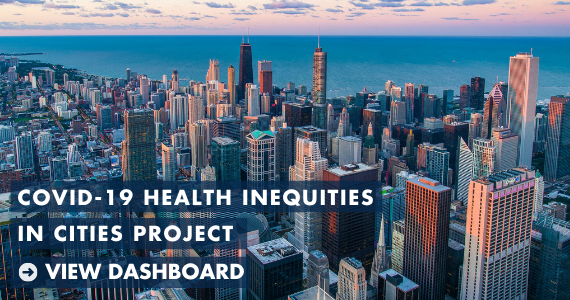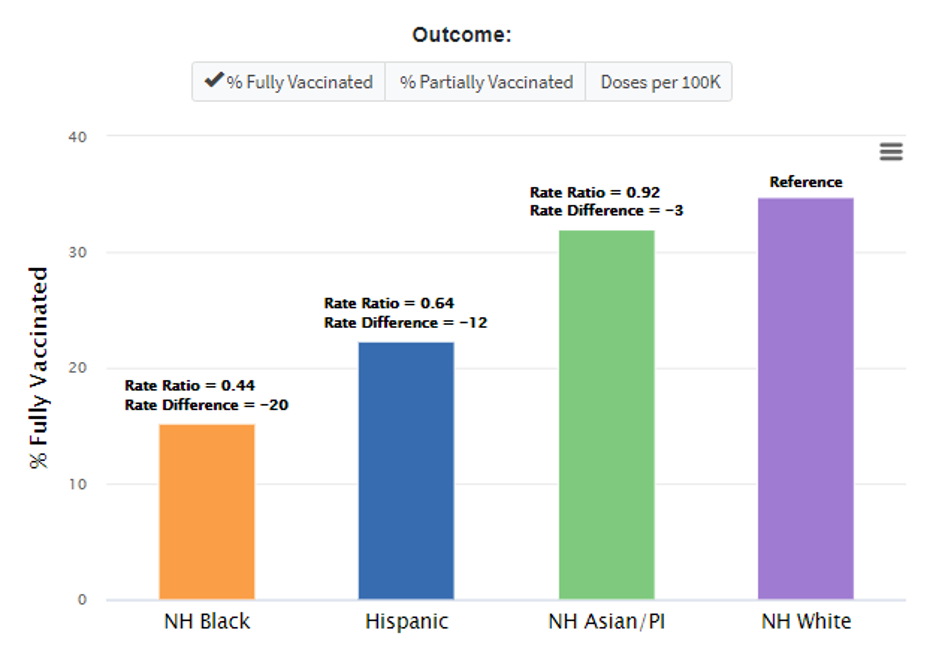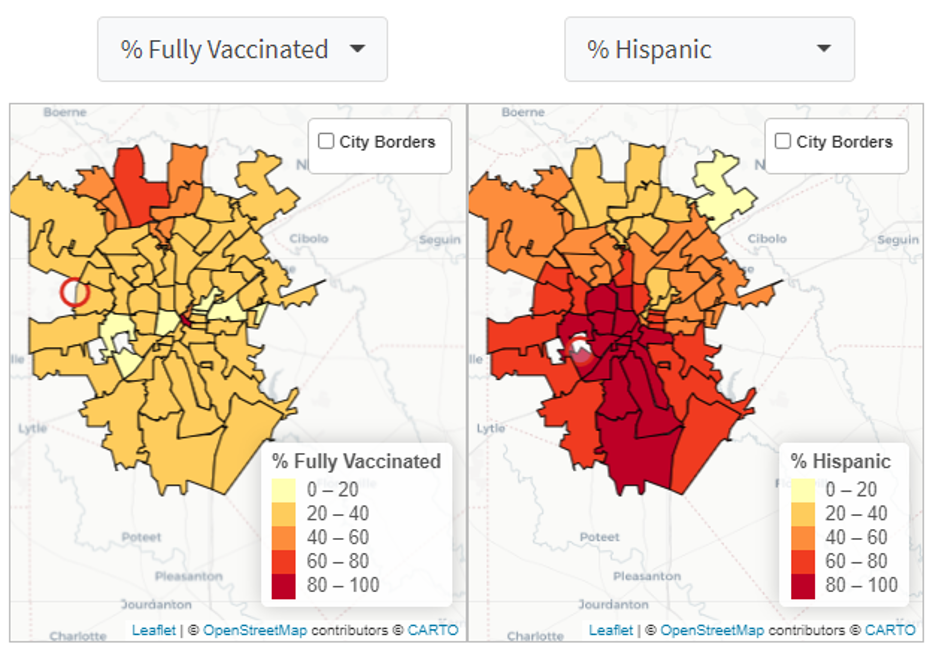Tracking COVID-19 Testing and Vaccination Inequities in Cities

6/3/2021 12:00:00 PM
The Drexel Urban Health Collaborative partnered with the Big Cities Health Coalition (BCHC) to release the “COVID-19 Health Inequities in Cities Dashboard” in January 2021. This powerful data tool enables visualizations of COVID-19 related outcomes such as testing, incidence, hospitalizations, and mortality and examines inequities in outcomes over time and across 30 BCHC member cities.
Recently, the dashboard was updated to include displays, comparisons, and geographic inequities in COVID-19 vaccinations and neighborhood availability and access to COVID-19 testing through spatial analysis.
With vaccination becoming more widespread, tracking outcomes and inequities in COVID-19 vaccination rates can be used to determine gaps in vaccine coverage. In a new “Vaccination” section added to in the Inequities section of the dashboard, users can track, describe, and compare inequities in COVID-19 vaccination on multiple levels in US cities. The “City Report: Vaccinations” tab allows users to select a city from the dropdown list to examine inequities in COVID-19 vaccination outcomes by race/ethnicity (see figure 1) and by neighborhood (see figure 2) for the selected city.

Figure 1 (above): COVID-19 Vaccination Inequities by Race/Ethnicity. San Antonio, TX

Figure 2 (above): COVID-19 Vaccination Inequities by Neighborhood. San Antonio, TX
The “Vaccination Inequities Across Cities” tab allows users to visualize inequities and outcomes in COVID-19 vaccination between different racial/ethnic groups at the individual level. Users can also explore the differences in COVID-19 vaccination related outcomes between the top and bottom quartiles of the selected neighborhood and city level indicators.
The new section on testing added to the dashboard leverages COVID-19 testing site data from Castlight Health to display two COVID-19 testing metrics: potential demand and spatial accessibility.
The team has also released new blog posts describing the COVID-19 testing metrics selected for this section, the first on Potential Community Demand and the second on Spatial Accessibility. In the “City Report: Testing Accessibility” tab, users can visualize inequities in the spatial accessibility to COVID-19 testing by several neighborhood characteristics. Additionally, in the “Testing Inequities Across Cities” tab users can plot inequities as percent differences or top and bottom quartiles to visualize inequities in COVID-19 testing access across cities at the neighborhood level.
To read more about these new updates, visit the COVID-19 Health Inequities in Cities blog.